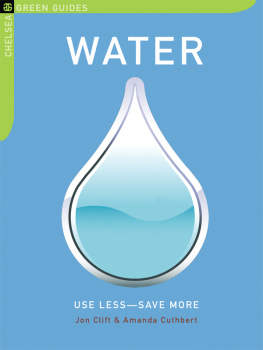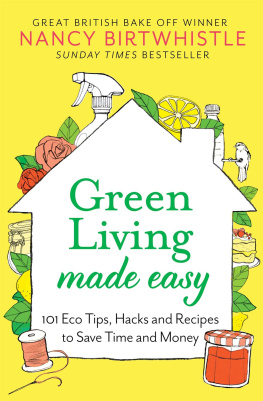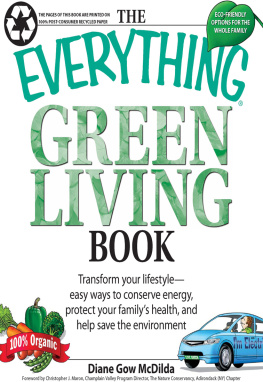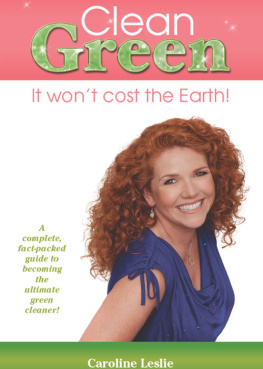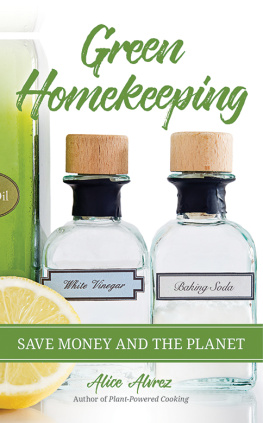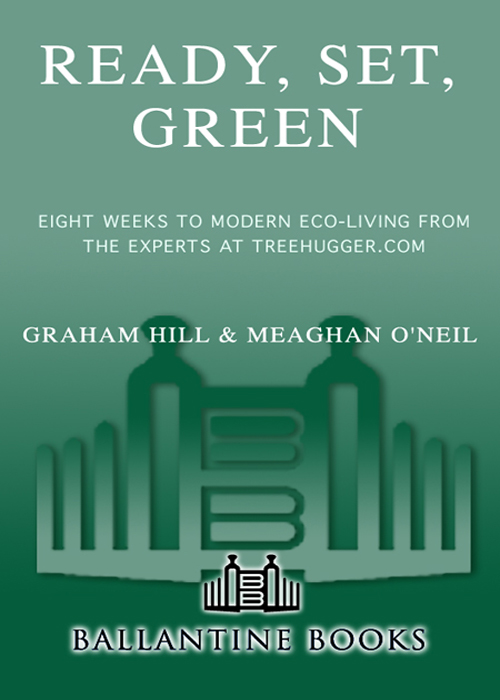
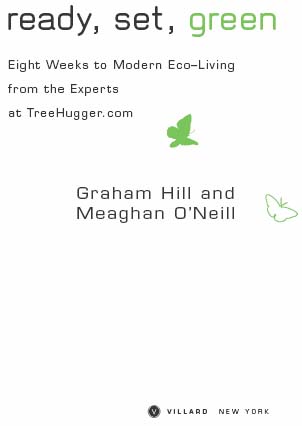

For Nicholas,
and all the littlest TreeHuggers

The Future Is Green
WHAT YOU CAN DO
Look out your window. What do you see? A paved street and electrical wires? Meadows and birds? A farm full of cows? Whatever surrounds you, thats the environment. And whether it was created by Mother Nature or the municipal works department, humans arent separate from it. Just as hurricanes, floods, and tornadoes have an effect on our well-being, we have an effect on nature, polluting water via our factories and homes, reducing mountains to piles of coal that we burn for energy, packing landfills with our used-up cars and electronics packaging. Luckily, it turns out we also have the power to clean up after ourselves.
At TreeHugger.com, the website dedicated to modern green living, we believe that cutting-edge ideas, technology, and designand, more important, people with the right attitudecan help save the environment. This book was conceived to help readers develop an understanding of existing eco dilemmas, and to empower them to help reverse the problems. We dont have all the answers; no one does. But we believe that individuals do have the power to green the planet. Your dollars count. Your vote counts. Your actions count. And when millions of people do the right thing, it can have a serious impact.
A BRIEF HISTORY OF ENVIRONMENTALISM
In the mid-eighteenth century, the industrial revolution changed life as humans knew it. Local economies that produced and sold goods made primarily from biodegradable parts gave way to economies of mass-produced items that could be shipped all over the world. It was a time of great achievement and hope, but also of great innocence and ignorancewhen people could not fathom that natural resources could someday become scarce or even dry up altogether.
By the late 1800s and early 1900s, the need for land conservation became apparent to people such as John Muir and President Theodore Roosevelt, the latter of whom set aside more land for national parks and nature preserves194 million acres by 1909than all his predecessors combined. It wasnt until the 1960s, however, that the modern environmental movement was born. Utopian idealists dreamed of living off the land and sticking it to the man. Their goals were lofty, but extremists pushed the movement to the fringe. At the same time, environmentalism became fragmented. Various factions debated the value of the natural environment and its relationship to human progress: Does nature exist to serve humankind, or vice versa? Does man have an ethical obligation to protect nature? If so, should he do so for his own benefit, or should he preserve nature for its own sake?
Today these questions have become scientific and economic queries about biodiversity, human health, and natural capital. Because we now know that we are depleting and polluting our most essential raw materialssuch as water, forests, petroleum, and clean airenvironmentalism has taken on a new personality in the twenty-first century. Weve arrived at a point where philosophical and political issues can be put aside. We know scientifically that we must collectively come together to rethink the way things are done. To our credit, weve tackled other eco challenges: When scientists told us that the ozone layerthe part of the atmosphere that protects the Earth from the suns harmful UV rayswas being depleted, humans stepped up to the plate and developed solutions to the problem. We can do the same for global warming.

The last time that humanity was challenged to rethink the world, we came up with the Enlightenment, which served our kind very well up to now.
Susan S. Szenasy, editor-in-chief of Metropolis
Whether youve picked up this book for altruistic, ethical, or scientific reasons almost doesnt matter. You are part of a critical mass that is shaping the new wave of do-it-yourself environmentalism into a grass-roots social movement that has little to do with baggy hemp pants and tofu and everything to do with intelligent modern living. The next industrial revolutionwhen the interests of technology, ecology, and commerce overlaphas already begun. Welcome to the bright green future.
circa 1750 | Industrial revolution begins, changing the way things are made, distributed, and consumed. Natural resources are considered infinite. |
1820 | World population reaches 1 billion. |
1872 | Americas first national park, Yellowstone, established. |
1892 | Sierra Club founded. Land conservation becomes a national topic. |
1930 | World population reaches 2 billion. |
1956 | Peak oil theory predicts we will run out of petroleum in the foreseeable future. |
1960 | World population reaches 3 billion. |
1962 | Rachel Carsons Silent Spring published, detailing how insecticides and pesticides affect human health. Modern environmental movement is born. |
1968 | First Whole Earth Catalog published. |
1970 | First Earth Day celebrated. |
1970 | U.S. Environmental Protection Agency established. |
1973 | First oil crisis takes place. |
1974 | First warnings of ozone layer damage are released. |
1979 | Second oil crisis takes place. |
1980 | First Whole Foods Market opens, in Austin, Texas. |
1989 | Exxon Valdez creates largest oil spill in U.S. history. |
circa 1990 | Recycling bins begin to appear on curbs across the United States. |
1993 | Patagonia begins making first fleece garments from recycled plastics. |
1999 | World population reaches 6 billion. |
2002 | Cradle to Cradle published, rethinking the problems and solutions of industry and dubbing the modern era the next industrial revolution. |
2002 | U.S. Department of Agriculture creates organic food label. |
2004 | Kyoto Protocol ratified. International signatories pledge to cut carbon dioxide emissions by 5 percent overall from 1990 levels, between 2008 and 2012. |
2005 | Scientists proclaim this year the hottest on record. |
2006 | The documentary An Inconvenient Truth is released, making the threat of global warming evident to millions. |
2008 | You begin helping to save the world. |
A TIME LINE OF ENVIRONMENTALISM

Next page

